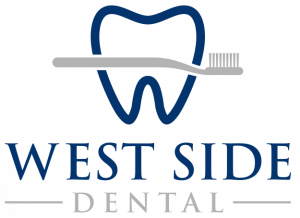Dental Appliances
Your orthodontist may recommend a mouthguard to protect your jaw, teeth, and orthodontics from high-impact sports and retainers to help you maintain your straight, new smile.

Table of Contents
Why We Use Dental Appliances?
Orthodontists use dental appliances for several reasons:
Correcting Malocclusions: Dental appliances help correct bite issues, such as overbites, underbites, crossbites, and open bites, ensuring proper alignment of the jaws and teeth.
Teeth Alignment: Appliances like braces and aligners straighten crooked or misaligned teeth, improving the appearance and function of the smile.
Jaw Alignment: Certain appliances, like the Herbst appliance, address jaw alignment issues, guiding the growth and positioning of the jaw to achieve a balanced facial structure.
Space Maintenance: Space maintainers prevent adjacent teeth from shifting into the space left by a lost tooth, ensuring proper alignment when the permanent tooth emerges.
Preventive Treatment: Early use of appliances can prevent more severe orthodontic issues from developing, reducing the need for more extensive treatment later on.
Functional Improvement: Appliances can improve the overall function of the mouth, including chewing, speaking, and breathing.
Aesthetic Enhancement: Properly aligned teeth and jaws contribute to a more attractive smile, boosting the patient’s confidence and self-esteem.
By addressing these issues, orthodontic appliances play a crucial role in maintaining oral health and enhancing the quality of life for patients.
Herbst Appliance
What is the Herbst appliance?
Benefits of the Herbst Appliance
Orthodontists often recommend the Herbst appliance for children to ensure long-term dental health into adulthood. This appliance is highly effective in correcting various bite alignment issues, including:
- Extreme overbite
- Narrow arch
- Posterior crossbite
- Upper jaw protrusion
Beyond enhancing dental health, the Herbst appliance provides a more attractive alternative to traditional headgear. When paired with Invisalign clear aligners, the aesthetic and functional benefits of the Herbst appliance are significantly enhanced.
What patients get the Herbst appliance?
Made from metal, acrylic, and springs, this appliance effectively moves the lower jaw forward. It is typically recommended for younger patients to ensure long-term dental health. The Herbst device also offers significant aesthetic improvements over traditional headgear. It is often used in combination with conventional braces or removable, transparent aligners like Invisalign. For more information on how Invisalign can treat malocclusion, contact our team.
How does the Herbst appliance work?
During your consultation, our dental team will evaluate your jaw and teeth to determine if you or your child are a suitable candidate for the Herbst appliance. Once that’s determined, we will schedule an appointment to apply the device. The Herbst appliance is usually placed on the molars, a straightforward procedure that may involve a local anesthetic to ensure comfort.
When combined with orthodontic treatment, this appliance can simultaneously move the jaw and straighten the teeth, effectively working as a crossbite aligner. Typically, the Herbst device is worn for 12 to 15 months, though this timeframe can vary based on each patient’s specific needs and treatment goals.
Athletic Mouthguards
Orthodontic mouth guards offer a variety of benefits to patients who engage in high-intensity physical activity and athletics and need to protect their braces or other orthodontic appliances. Some of the most common advantages of orthodontic mouth guards include:
- Prevent serious injury
- Protects dental restorations
- Protects your natural teeth
- Protects the soft tissues in your mouth
Who Needs an Orthodontic Mouthguard?
Athletic mouth guards are custom-made to fit and protect your mouth, unlike store-bought options that often don’t fit comfortably and aren’t compatible with orthodontic treatments. Wearing a mouth guard during contact sports or high-risk activities like skateboarding or rollerblading is essential to protect your teeth. Many patients report that ill-fitting guards can press against their gums and teeth, causing discomfort and distraction during sports.
If you have any of the following orthodontic appliances, a consultation about a custom mouth guard may be beneficial:
- Traditional metal braces
- Clear or ceramic braces
- Aligners
Our team understands the importance of selecting the right protective equipment. Using a custom mouth guard for sports can help safeguard your teeth, gums, and orthodontic appliances from trauma or injury.
Dental Appliances FAQs
Dental appliances, such as braces, clear aligners, and retainers, correct malocclusions by gradually applying controlled pressure to teeth and jaws, guiding them into proper alignment over time. Braces use brackets and wires to move teeth, while clear aligners are custom-made, removable trays that shift teeth in small increments. Retainers help maintain the corrected position after the initial treatment.
These appliances can address various malocclusions, including overcrowding, overbites, underbites, and crossbites, improving both the function and aesthetics of the patient’s bite and smile.
The duration of treatment with dental appliances typically varies depending on the type and severity of the malocclusion, the specific appliance used, and the individual patient’s response to treatment. Braces may take anywhere from 18 months to 3 years to achieve desired results. Clear aligners, such as Invisalign, often require a similar timeframe but can sometimes be shorter if the case is less complex.
Retainers used post-treatment help maintain alignment and can be worn for several years or indefinitely, depending on the orthodontist’s recommendation. Regular follow-up appointments ensure the treatment progresses as planned and adjustments are made as needed.
Caring for and cleaning dental appliances involves essential steps to maintain oral hygiene and ensure the appliances function effectively. For braces, brush your teeth after every meal using a soft-bristled toothbrush and fluoride toothpaste, and floss daily with special orthodontic floss or a floss threader to remove food particles and plaque from between teeth and around brackets. Clear aligners should be rinsed and brushed with a soft toothbrush, mild soap, or a special aligner cleaner, avoiding hot water that can warp the plastic. Retainers should be cleaned daily with a toothbrush and non-abrasive toothpaste or retainer cleaner.
Regularly visiting your dentist or orthodontist for check-ups and professional cleanings is also crucial to monitor the condition of both your teeth and appliances.
